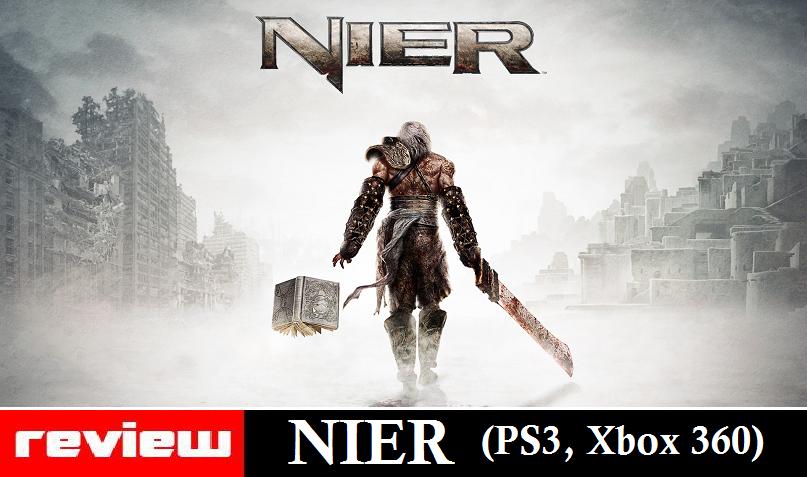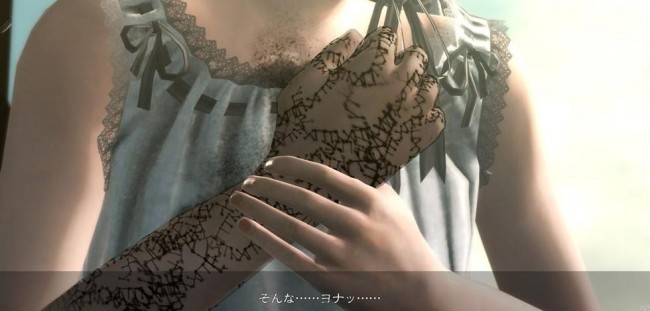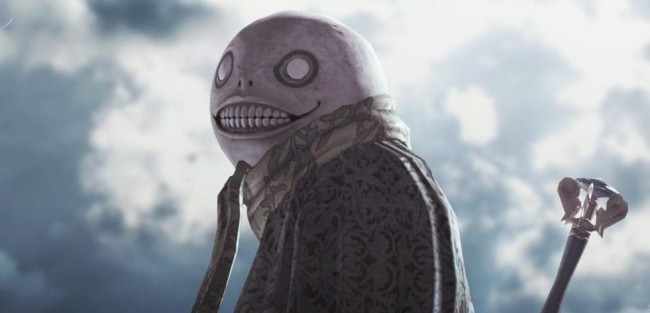VITALS
Game: NIER (NieR Gestalt)
Developer: Cavia
Released: April 27, 2010
Platform: PlayStation 3, Xbox 360
.
I began playing NIER fully expecting to hate it. I looked forward to ripping it apart come time for review. I actually took notes while playing just to be ready for all of the awful dialogue and design choices I was sure to encounter. But as I let the scenery and background music wash over me, as I gave the characters time to tell their stories, I began to realize that Square Enix may have snuck a surprisingly enjoyable game right under my nose.
NIER is a little hard to explain. It’s a dungeon-crawling action-adventure with RPG elements. That is to say, it’s the Legend of Zelda with experience levels and item drops, but that’s not quite it either. Sometimes it’s also a bullet hell shmup. Sometimes it’s a text adventure. Sometimes it’s a 2D platformer. Sometimes it’s an isometric hack and slash. NIER tries to be so many different things that it’s a miracle the game isn’t a broken mess. Yet somehow, everything works. Well, almost everything.
.
.
In NIER, you are tasked with finding a cure for Nier’s daughter, Yonah, who has contracted a mysterious illness known as the Black Scrawl, the symptoms of which include lines of runic symbols appearing on the victim’s skin and eventual transformation into a Shade, one of the game’s smoky, impish foes. The search for the cure will have you exploring dungeons, fulfilling quests doled out by musical twins Devola and Popola, and defeating all manner of malicious Shade. On the way you’ll unlock thirty different one-handed swords, two-handed swords (think Cloud Strife’s Buster Sword), and spears, discover buffs and debuffs for your weapons and abilities, upgrade your weapons with farmed materials, grow crops, complete fetch quests for needy villagers, and fish. Oh, and that’s just on your first playthrough. That’s right, NIER allows you to carry over all of your items, abilities, and experience to a New Game+, where you can unlock supplemental dialogue and cutscenes throughout the latter half of the game as well as three additional ending sequences that extend the story and reveal even more about the fate of Nier and his companions. NIER is huge.
.
.
Thankfully, the 30+ hours I invested in my first run were mostly enjoyable. The characters are interesting, the visuals are pleasant to look at, and the music is phenomenal. In fact, the music is likely the first thing you’ll notice about NIER. Acoustic guitar, choir ballads, tribal drums, industrial clanking, all of it is incredible and seamlessly fades in and out with changes in setting or situation. Tell me you aren’t humming Devola’s tune after playing the opening few hours, and I’ll call you a liar.
The game doesn’t look half bad either. Some of the textures are bland and a little dated, but the art direction more than makes up for that. Locales are always interesting, ranging from windswept, mountainous hives to deserted, underground laboratories. Unfortunately, character and enemy designs are mostly unimpressive, save for a few interesting bosses and, of course, the main character, who resembles a steroid abusing Nick Nolte. And then there’s this guy, straight from your nightmares:
.
.
My favorite part, though? The bosses. Some are Nier-sized, some are enormous, each are completely different from the one before it. Each boss baddy you encounter will require you to pummel it with myriad magic spells and melee attacks before a timer pops up on one of its extremities. Damage that region before the timer counts down and Nier will unleash a devastating finishing move, often destroying some of the surrounding structures in the process.
.
.
Nevertheless, there are problems. Like material farming for weapon upgrades, a feature which requires you to collect x number of gizmos and what-its to increase the strength of your weapon of choice. This might not sound too bad. The problem is that some of these essential ingredients have one possible spawn point on the map or one enemy that drops them (if they drop them), forcing you to revisit areas literally hundreds of times to collect enough materials for all of the upgrades. The weapon upgrades alone turn a 30-35 hour adventure into a 70+ hour exercise in frustration. Thankfully, they are optional.
And then there is the fishing. While not as bad as has been rumored, some of the rarer, higher level fish really do take several minutes to reel in. And sometimes the prize catch turns out to be a worthless aquatic plant or rusted clump of metal. Again, though, catching fish (aside from the first one) is optional.
.
.
NIER‘s major fault is its occasional lack of direction. Well, that and the extreme repetition, but I’ll get to that in a minute. Most of the magical spells and techniques are learned through short, one-sentence blurbs with no real training on how or where to use them. I didn’t even know I could double jump until 2 hours in or that I could use an overhead jumping melee attack until 13 hours. The fishing also suffers from lack of direction. Of the 15 different kinds of fish located throughout the waterways of NIER‘s landscape, only one is shown on your map, since it’s a primary quest. The others are up to you figure out where to fish for each species, what kind of bait to use, and if you’re the appropriate level to even catch said fish. Oh, and your fishing level? It’s invisible. There’s no meter, no title, no chart. Either you can catch the fish or you can’t. I recommend keeping an FAQ nearby.
Another major problem with NIER (and arguably the most telling about it’s development process) is its repetitive nature. There are approximately seven different dungeons throughout the game; some are previously unseen parts of the same area, but for arguments’ sake let’s say that seven exist. While all seven have a unique design (some going so far as to completely change the core gameplay mechanics), the majority of the dungeons need to be revisited at least twice in order to complete the game. The Lost Shrine was interesting the first time through, but do I really need to climb to the top a third time? Similarly, most of the 70-odd sidequests will see you traveling between the same three towns to purchase a specific item or talk to a designated NPC. Mindless fetch quests may be standard fare for an RPG, but that doesn’t make them any more fun. Oh, and did I mention that the fishing sucks?
.
.
FINAL THOUGHTS
At first glance, NIER may seem pretty rough. It looks a little dated, it constantly repeats itself, and, appears unfinished in more than a few places. Glaring imperfections aside, however, NIER can be a lot of fun. The combat, the story, the music – all of it is a delight. NIER certainly won’t be on anybody’s game of the year list for 2010, but it has definitely earned a place in my list of hidden gems. Give it a shot and you might find yourself liking this strange adventure as much as I did.
.
This review is based on the PS3 version of the game provided by Square Enix. The story mode was completed in about 30 hours with 55 of 70-some sidequests completed and 20 of 42 trophies earned. Images courtesy of Square Enix.
And be sure to stick around for …
.
.
.
.
.
And now I get to the most important part of any game, the achievements trophies.
Simply put, NIER‘s trophies are kind of a pain. The majority simply require you to play through the story or defeat certain enemies within a specified time frame, but a few are an absolute nightmare. Man of Means, for instance, requires you to accumulate 1,000,000 gold pieces, a process which involves cultivating and selling the legendary white moonflower. Oh, and cultivating plants takes 24 real-life hours, so you’ll need to fiddle with your system clock if you expect to get anything accomplished. The weapon upgrade trophies are a headache as well, forcing you to farm rare materials for hours on end. Be sure to have some podcasts queued up or play while watching a movie picture-in-picture, they’ll help the time go by a little bit faster.









3 Comments